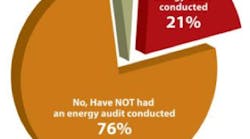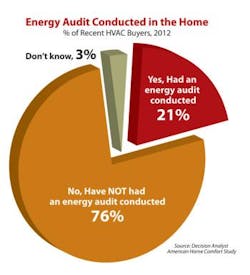Q: How can HVAC home comfort companies improve upon the traditional Clean-and-Check?
A: As the industry prepares for the next air conditioning season, I’m reminded of four calls I received last November from HVAC contractors offering furnace Clean-and-Checks. They each shared their winter Clean-and-Check plans, hoping to schedule a trip to my home. I’ve had a service agreement since the late 1980s, and told each that I had one.
When I worked for a major HVAC manufacturer in the 1980s, I was blown away by our service agreement business plan. We charged nothing to our channel partners for the professional product we built. It was a program based on significant homeowner research. It was assigned to someone important to the company — the chairman’s son — and we gave it away because we valued our partners, and knew if they grew, we would grow. Further, we knew this was one of the best tools for our channel partners and their homeowner customers at the time. Today, the information available to the homeowner can be much more competitive with a service agreement, and with Clean-and-Check promotions.
What About Energy Audits?
Clean-and-Checks and Service Agreements are still important. In a recent article I shared how many new homeowner HVAC central equipment buyers purchased a service agreement with their new equipment. It was between one in every four to five; almost half.
Today, a Service Agreement is not enough. Your technicians must be more interactive with the homeowner. They can’t simply leave the 14/18 point check up on the homeowner’s table and leave. Outside of the information your service agreement provides, your customer is more informed, and in fact wants to be more informed about their home energy and comfort levels as the charts in this article display. In what ways are your teaching your technicians the art of sharing the information with the homeowner? In what ways are you helping them find ways to add other information to the service?
One fifth of recent central system equipment buyers had invested in an energy audit. Three in 10 now know they have a smart meter in their home. You may provide information to customers, however, they now find other sources of information on their own.
When I told each of the four callers I already had a service agreement, the call was immediately over. No one asked:
1. Has your contractor already completed your winter Clean-and-Check yet?
2. Are you happy with the service you are receiving from your existing contractor?
3. Do you know what your service agreement covers?
4. Do you have a smart meter in your home? Do you know how to use it?
5. Have you had an energy audit recently?
6. Would you like to know the ways we help our customers using energy and comfort plans and programs?
Not one caller moved past “good bye.”
PERCENTAGE OF HOME OWNERS WITHOUT ENERGY METERS
TOTAL U.S.: 58%
Northeast: 67%
Midwest: 70%
South: 55%
West: 43%
In fact, two simply hung up without a thank you or a goodbye. They had a homeowner who understands the importance of inviting a professional into their home to check and prepare their home for another season, and yet they did nothing to further qualify me as a possible client.
It’s time to move away from the methods of the past. Building on the past is important, but how will you incorporate smart meters into your homeowner’s on-going service? These new meters will continue to grow in importance to your customer.
Are you reading articles and finding ways to apply information to your Clean-and-Check or Service Agreement product? Our own American Home Comfort study for 2013 (often used in these articles) is being used not only by contractors, distributors, manufacturers, energy utilities, and government agencies, but also companies working on finding ways to help consumers and utilities use the information their smart meter can provide.
Are you building/using information that will benefit your customer and your business? Are you helping your customer get improved comfort while better controlling their energy use? Or are you still stuck in the 1980s, with nothing beyond your Clean-and-Check calls?
Decision Analyst’s American Home Comfort Study of homeowners explores what customers look for in HVAC contractors. To learn more about this study, or to purchase it, contact Garry, at [email protected].










